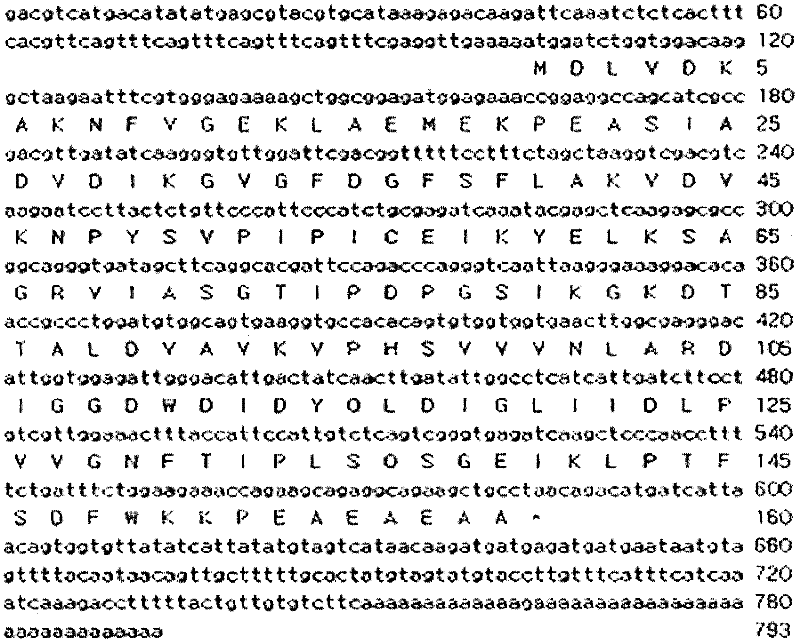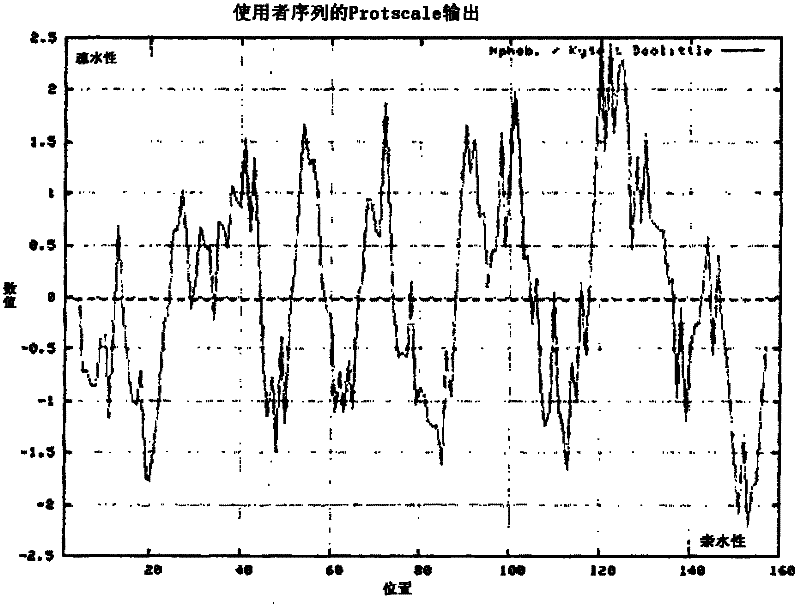IbLEA14 gene from ipomoea batatas roots and use thereof
A gene and amino acid technology, applied in the field of IbLEA14 gene from sweet potato rhizome and its application, can solve the problem of lack of LEA14 gene, etc., and achieve the effect of increasing lignin content
- Summary
- Abstract
- Description
- Claims
- Application Information
AI Technical Summary
Problems solved by technology
Method used
Image
Examples
Embodiment 1
[0074] Example 1: Cloning, base sequence analysis and class relationship analysis of sweet potato IbLEA14 gene
[0075] Sweet potato (Ipomoea batatas (L.) Lam. cv. White star) plants were cultured in MS (Murashige and Skoog, 1962) basal medium for 60 days. Sweet potato plants cultured in MS basal medium were cultured in a 25°C thermostat for 60 days with a 16-hour light and 8-hour dark cycle, and then transferred to soil. The sweet potatoes transferred to the soil were used in the experiment after 14 days of acclimatization in a constant temperature machine at 25°C under the conditions of a 16-hour light and an 8-hour dark cycle. The fibrous roots of the cultivated plants were separated from the soil, and then dried in a constant temperature machine at 25° C. for 6 hours. After drying, total RNA was isolated from fibrous root tissue by the CTAB method (Kim et al. BMB Rep 42, 271-276, 2009). The mRNA was isolated using the Poly(A)Tract mRNA Isolation System, and the cDNA libr...
Embodiment 2
[0078] Example 2: Expression Analysis of IbLEA14 Gene in Sweet Potato Tissues
[0079]In order to analyze the expression state of each tissue of sweet potato IbLEA14 isolated from dried sweet potato rhizomes, RT-PCR and real-time fluorescent quantitative PCR were carried out. After isolating all RNA from sweet potato tissues (leaves, stems, tubers, fibrous roots and thick roots) using the CTAB method (Kim and Hamada, Biotech Lett 27, 1841-1845, 2005), use 2 μg of RNA to pass through MMLV Reverse Transcription System cDNA Synthesis kit (Promega Company) synthesized cDNA. The expression phenomenon of the IbLEA14 gene was investigated using the IbLEA14 gene-specific catalyst and the Accel Taq Premix kit (Gendocs). For the specific catalyst for IbLEA14, forward direction (5'-GCCCTGGATGTGGCAGTG-3'; SEQ ID NO: 3) and reverse direction (5'-GGCAGCTTCTGCCTCTGCTTC-3'; SEQ ID NO: 4) catalysts were used. As a result, the IbLEA14 gene was strongly expressed in fibrous roots and thick pig...
Embodiment 3
[0080] Example 3: Analysis of the expression characteristics of the IbLEA14 gene according to various stress treatments including drying treatment
[0081] In order to analyze the response degree of IbLEA14 gene to various stress treatments including desiccation, after treating the compounds related to various stress conditions, namely desiccation, phytohormones (ABA), low temperature and stress, real-time fluorescent quantitative PCR was used to analyze the Expression changes of the IbLEA14 gene.
[0082] First, in order to analyze the degree of response of the IbLEA14 gene to drying treatment, after drying the leaves and fibrous root tissues of sweet potato according to the time period (0, 1, 2, 8, 16 and 24 hours), the method implemented in Example 2 RNA was isolated and cDNA was synthesized separately thereafter. Real-time fluorescent quantitative PCR was performed with the IbLEA14 gene-specific catalyst used in Example 2. As a result, the IbLEA14 gene showed the stronge...
PUM
 Login to View More
Login to View More Abstract
Description
Claims
Application Information
 Login to View More
Login to View More - R&D
- Intellectual Property
- Life Sciences
- Materials
- Tech Scout
- Unparalleled Data Quality
- Higher Quality Content
- 60% Fewer Hallucinations
Browse by: Latest US Patents, China's latest patents, Technical Efficacy Thesaurus, Application Domain, Technology Topic, Popular Technical Reports.
© 2025 PatSnap. All rights reserved.Legal|Privacy policy|Modern Slavery Act Transparency Statement|Sitemap|About US| Contact US: help@patsnap.com



